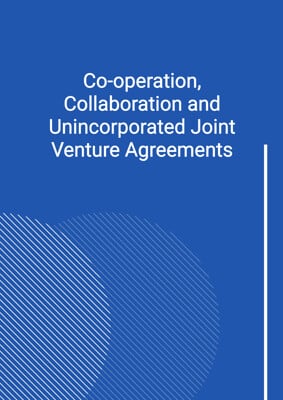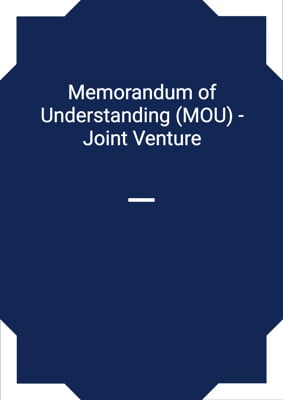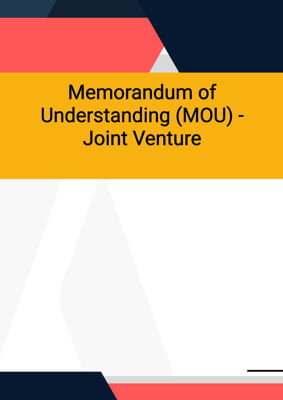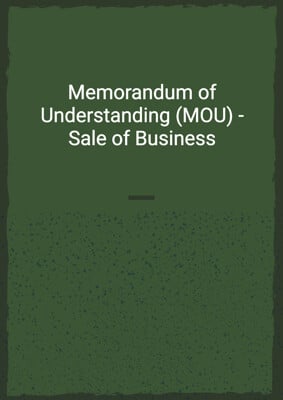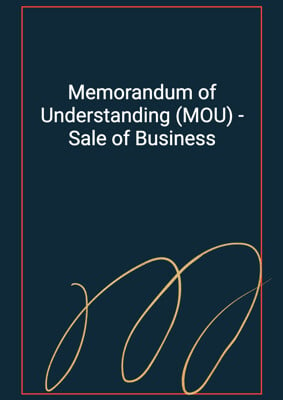How to Tailor the Document for Your Need?
01
Create Document
Fill in the details of the parties. You can click the "Fill with Member’s Information" button to complete it with information saved to your account.
02
Fill Information
Please fill in any additional information by following the step-by-step guide on the left hand side of the preview document and click the "Next" button.
03
Get Document
When you are done, click the "Get Document" button and you can download the document in Word or PDF format.
04
Review Document
Please get all parties to review the document carefully and make any final modifications to ensure that the details are correct before signing the document.
Document Preview
Document Description
The document titled 'Letter of Intent (LOI) - Joint Venture (Detailed)' is a crucial document that outlines the proposed joint venture between two parties. It serves as a preliminary agreement before the finalization of legally binding agreements. The importance of this document lies in its ability to establish the mutual interests of both parties and set the foundation for the joint venture.
The entire document is divided into several sections, each serving a specific purpose. The first section introduces the letter of intent and emphasizes the mutual benefits of the joint venture. It also highlights the intention to establish a joint venture company and the preferred structure for the venture.
The second section focuses on the activities of the joint venture. It outlines the specific business field and territory in which the joint venture will operate. It also mentions the development of a business plan and the contribution of existing interests by both parties.
The third section addresses the technology aspect of the joint venture. It highlights the exchange of existing technology and the licensing of trademarks and names to the joint venture.
The fourth section discusses the valuation process. It mentions the negotiation of an appropriate valuation methodology and the provision of necessary information for the valuation. It also addresses the resolution of any differences in valuations and the inclusion of warranties and indemnities in the final agreements.
The fifth section focuses on the capital and funding of the joint venture. It states the intention for the joint venture to be self-financing and obtain funds from third parties. It also mentions the parties' commitment to support the joint venture according to the business plan.
The sixth section deals with the board and management of the joint venture. It outlines the equal representation of both parties on the board and their respective roles. It also mentions the initial appointments to the board and senior management positions.
The seventh section discusses the shareholders' agreement. It highlights the reserved decisions requiring mutual agreement, such as changes in the business scope and appointment/removal of key personnel. It also addresses dividend policy, auditors, financial year, and pre-emption rights.
The eighth section addresses the need for third-party approvals, including consents from other partners and regulatory authorities. It emphasizes the parties' cooperation in obtaining these approvals.
The ninth section focuses on confidentiality and announcements. It highlights the obligation to keep information confidential and obtain approval for any public announcements or press releases.
The tenth section briefly mentions dispute resolution and the jurisdiction clause.
The eleventh and final section clarifies that the letter of intent is not legally binding, except for specific clauses related to confidentiality, dispute resolution, and jurisdiction. It emphasizes that the purpose of the document is to set out the principles for negotiating legally definitive agreements.
In summary, the 'Letter of Intent (LOI) - Joint Venture (Detailed)' is a comprehensive document that covers various aspects of the proposed joint venture. It highlights the importance of the joint venture, introduces each section in detail, and provides a clear understanding of the document's contents.
How to use this document?
1. Review the entire document to understand the proposed joint venture and its importance.
2. Pay attention to each section of the document, as they serve specific purposes and provide detailed information.
3. Focus on the establishment of the joint venture company, including its name and preferred structure.
4. Consider the activities of the joint venture, such as the business field, territory, and the development of a business plan.
5. Take note of the technology aspect, including the exchange of existing technology and licensing of trademarks and names.
6. Understand the valuation process, including the negotiation of valuation methodology and the provision of necessary information.
7. Consider the capital and funding of the joint venture, emphasizing its self-financing nature and the parties' commitment to support it.
8. Pay attention to the board and management structure, including equal representation, initial appointments, and senior management positions.
9. Familiarize yourself with the shareholders' agreement, reserved decisions, dividend policy, auditors, and pre-emption rights.
10. Understand the need for third-party approvals and the parties' cooperation in obtaining them.
11. Ensure confidentiality of information and obtain approval for any public announcements or press releases.
12. Take note of the dispute resolution mechanism and the jurisdiction clause.
13. Remember that the letter of intent is not legally binding, except for specific clauses related to confidentiality, dispute resolution, and jurisdiction.
14. Use this document as a guide for negotiating and finalizing legally definitive agreements for the joint venture.
Not the right document?
Don’t worry, we have thousands of documents for you to choose from:

